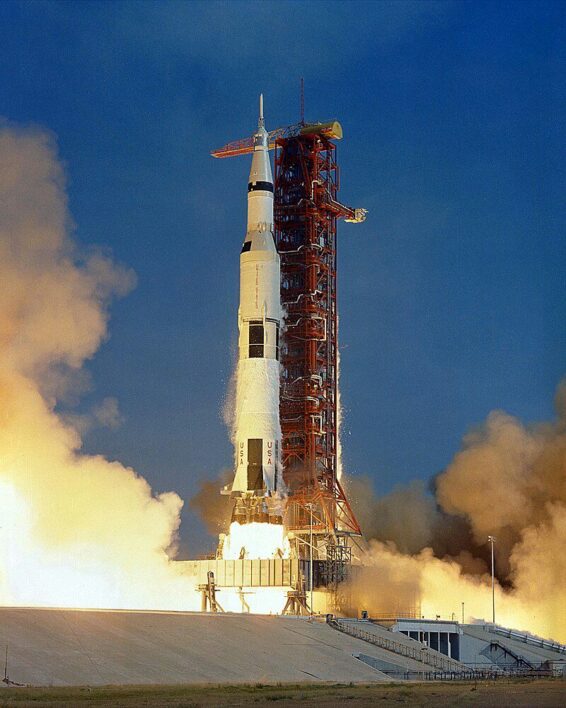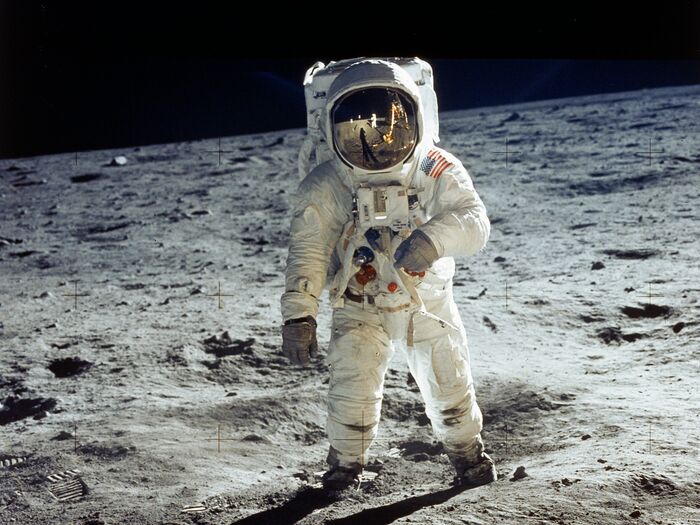The Story of Apollo 11

The Apollo 11 mission is one of the most significant events in human history. It was the first time humans had ever stepped foot on the moon, and it marked a major achievement for NASA and the United States. The story of Apollo 11 is a fascinating one, filled with incredible triumphs, near misses, and moments of pure inspiration. In this article, we’ll take a deep dive into the story of Apollo 11, exploring its origins, its challenges, and its ultimate triumph.
The Origins of the Apollo Program

The Apollo program was born out of the intense competition between the United States and the Soviet Union during the Cold War. In the early 1960s, the Soviet Union had taken the lead in the space race, launching the first satellite (Sputnik) and the first human (Yuri Gagarin) into orbit. This had a profound impact on the American psyche, and President John F. Kennedy made it a national priority to beat the Soviets to the moon.
The Apollo program was launched in 1961, with the goal of landing humans on the moon and returning them safely to Earth. NASA, which had only been established three years earlier, was given the task of making this dream a reality. It was an ambitious goal, one that would require an unprecedented level of technical expertise and resources.
The Challenges of Apollo 11

The Apollo program faced numerous challenges on its path to success. One of the most significant was the sheer technical difficulty of the mission. Getting humans to the moon and back required an enormous amount of engineering, from the design of the spacecraft to the construction of the launch vehicle.
Another major challenge was the risk to human life. The Apollo program was inherently dangerous, with a complex series of procedures that had to be executed flawlessly for the mission to succeed. Even the slightest mistake could be catastrophic, and the astronauts and engineers involved in the program had to be willing to accept this risk.
Perhaps the biggest challenge of all was the sheer scale of the undertaking. The Apollo program was one of the most ambitious projects in human history, involving thousands of people and costing billions of dollars. It required an enormous amount of coordination, planning, and resources, and it had to be completed on an extremely tight timeline.
The Mission of Apollo 11

The mission of Apollo 11 was to land humans on the moon and return them safely to Earth. It was a monumental task, one that had never been attempted before. The mission was led by Commander Neil Armstrong, Lunar Module Pilot Buzz Aldrin, and Command Module Pilot Michael Collins.
The Apollo 11 spacecraft consisted of three main components: the Command Module (which housed the astronauts during the journey to the moon and back), the Service Module (which provided propulsion and support systems), and the Lunar Module (which carried Armstrong and Aldrin to the surface of the moon).
The journey to the moon took four days, during which the astronauts had to contend with the challenges of space travel, including microgravity, radiation exposure, and isolation from Earth. Finally, on July 20, 1969, Armstrong and Aldrin landed the Lunar Module (named “Eagle”) on the surface of the moon. As Armstrong famously declared, “That’s one small step for man, one giant leap for mankind.”
The Legacy of Apollo 11

The legacy of Apollo 11 is a profound one. The mission was an incredible achievement for NASA and the United States, and it demonstrated the incredible potential of human ingenuity and innovation. It also served as a symbol of American leadership and technological superiority, at a time when the country was facing intense competition from the Soviet Union.
But perhaps more importantly, the mission of Apollo 11 inspired generations of people around the world. It showed that anything is possible if we set our minds to it, and work together towards a common goal. The spirit of exploration and discovery that drove the Apollo program continues to inspire scientists, engineers, and adventurers today.
The legacy of Apollo 11 also extends to the technology and scientific discoveries that were made during the mission. The development of the Apollo spacecraft and launch vehicle required significant advancements in fields such as materials science, propulsion, and computing. The mission also yielded important scientific insights into the moon’s geology, chemistry, and history.
The Apollo program paved the way for future space exploration, including the Space Shuttle program and the International Space Station. It also inspired a new generation of scientists and engineers, who have continued to push the boundaries of human knowledge and exploration.
Challenges and Controversies
Despite its incredible achievements, the Apollo program was not without its challenges and controversies. One of the most significant controversies was the cost of the program, which was criticized by some as being too expensive, especially given the other pressing needs of the country, such as poverty, healthcare, and education.
There were also concerns about the safety of the program, particularly after the tragic Apollo 1 fire in 1967, which claimed the lives of three astronauts. The accident highlighted the risks and dangers of space travel, and it led to significant changes in the design and testing of spacecraft.
Finally, there were concerns about the impact of the Apollo program on the environment and on the moon itself. The spacecraft and equipment left behind on the moon have had a lasting impact on the lunar surface, and some have raised questions about the ethics of leaving our mark on other celestial bodies.
Conclusion
The story of Apollo 11 is an incredible one, filled with challenges, triumphs, and moments of inspiration. It is a testament to the power of human ingenuity and innovation, and it has inspired generations of people around the world. The legacy of the Apollo program extends far beyond the moon landing itself, encompassing technological advancements, scientific discoveries, and a spirit of exploration that continues to drive human progress.
The story of Apollo 11 reminds us of the importance of setting ambitious goals, working together towards a common purpose, and never giving up in the face of challenges and setbacks. It is a story that will continue to inspire and captivate us for generations to come, and it serves as a powerful reminder of the incredible potential of human beings to achieve the seemingly impossible.
